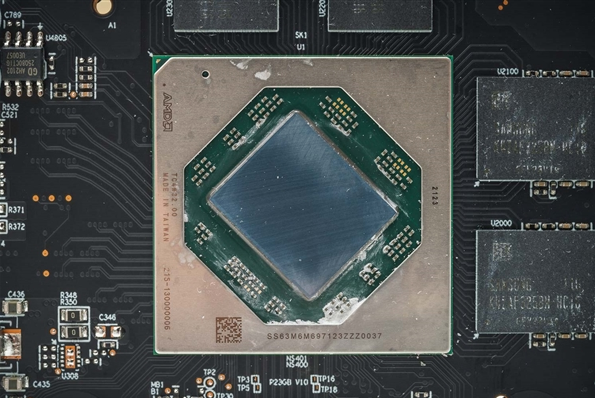PCB drilling and etchback is an important process after the rigid-flex printed PCB CNC drilling, chemical copper plating or direct copper electroplating. If the rigid-flex printed circuit board is to achieve reliable electrical interconnection, it must be combined with rigid-flex printed circuit boards. The circuit board is made of special materials, and the main material polyimide and acrylic are not resistant to strong alkalis, and appropriate de-drilling and etchback technologies are selected. Rigid-flex printed circuit board de-drilling and etchback technologies are divided into wet technology and dry technology. The following two technologies will be discussed with colleagues.
Bulking (also called swelling treatment). Use alcohol ether leavening liquid to soften the pore wall substrate, destroy the polymer structure, and increase the surface area that can be oxidized, so that the oxidation effect is easy to proceed. Generally, butyl carbitol is used to swell the pore wall substrate.
Oxidation. The purpose is to clean the hole wall and adjust the hole wall charge. At present, three methods are traditionally used in China.
Concentrated sulfuric acid method: Because concentrated sulfuric acid has strong oxidizing properties and water absorption, it can carbonize most of the resin and form water-soluble alkyl sulfonates to remove. The reaction formula is as follows: CmH2nOn+H2SO4--mC+nH2O The effect of wall resin drilling is related to the concentration of concentrated sulfuric acid, the treatment time and the temperature of the solution.

The concentration of concentrated sulfuric acid used to remove drilling dirt should not be less than 86%, 20-40 seconds at room temperature. If etchback is required, the temperature of the solution should be appropriately increased and the treatment time should be prolonged. Concentrated sulfuric acid only works on the resin and is not effective on the glass fiber. After the hole wall is etched by the concentrated sulfuric acid, the glass fiber head will protrude from the hole wall, which needs to be treated with fluoride (such as ammonium bifluoride or hydrofluoric acid). When fluoride is used to treat the protruding glass fiber head, the process conditions should also be controlled to prevent the wicking effect caused by the over-corrosion of the glass fiber.
According to this method, the punched rigid-flex printed circuit board was drilled and etched, and then the hole was metalized. Through metallographic analysis, it was found that the inner layer was not thoroughly drilled at all, resulting in the copper layer and the hole wall. The adhesion is low. For this reason, when the metallographic analysis is used for thermal stress experiment (288°C, 10±1 seconds), the copper layer on the hole wall falls off and the inner layer is broken.
Moreover, ammonium bifluoride or hydrofluoric acid is extremely toxic, and wastewater treatment is difficult. The more important thing is that polyimide is inert in concentrated sulfuric acid, so this method is not suitable for de-drilling and etchback of rigid-flex printed circuit boards.
(2) Chromic acid method: Because chromic acid has strong oxidizing properties and strong etching ability, it can break the long chain of the pore wall polymer material, and cause oxidation and sulfonation, and produce more on the surface. Hydrophilic groups, such as carbonyl group (-C=O), hydroxyl group (-OH), sulfonic acid group (-SO3H), etc., so as to improve its hydrophilicity, adjust the charge of the hole wall, and achieve the removal of hole wall drilling and dirt. The purpose of etchback.
According to this method, the punched rigid-flex printed circuit board was de-drilled and etched, and then the holes were metallized. Metallographic analysis and thermal stress experiments were carried out on the metallized holes, and the results were in full compliance with the GJB962A-32 standard. .
Therefore, the chromic acid method is also suitable for the de-drilling and etchback of rigid-flex printed circuit boards. For small businesses, this method is indeed very suitable, simple and easy to operate, and more importantly, the cost, but this method is the only one Unfortunately, there is a toxic substance chromic anhydride.
(3) Alkaline potassium permanganate method: At present, due to lack of professional technology, many PCB manufacturers still follow rigid multi-layer printed circuit board de-drilling and etchback technology--alkaline potassium permanganate technology to deal with rigid multi-layer printed circuit boards. -Flexible printed circuit board, after removing the resin drilling dirt by this method, at the same time, it can etch the resin surface to produce small uneven pits on the surface, so as to improve the bonding force of the hole wall plating layer and the substrate.
In a high-temperature and high-alkali environment, potassium permanganate is used to oxidize and remove swollen resin contamination. This system is very effective for general rigid multi-layer boards, but it is not suitable for rigid-flex printed circuit boards, because rigid-flex The polyimide, the main insulating substrate of the printed circuit board, is not alkali-resistant, and will swell or even partially dissolve in the alkaline solution, not to mention the high temperature and high alkali environment. If this method is adopted, even if the rigid-flex printed circuit board is not scrapped at that time, it will greatly reduce the reliability of the equipment using the rigid-flex printed circuit board in the future. According to the polymer materials used for rigid-flex printed PCBs, N2, O2, and CF4 gases are usually selected as the original gas. Among them, N2 plays a role in cleaning the vacuum and preheating.